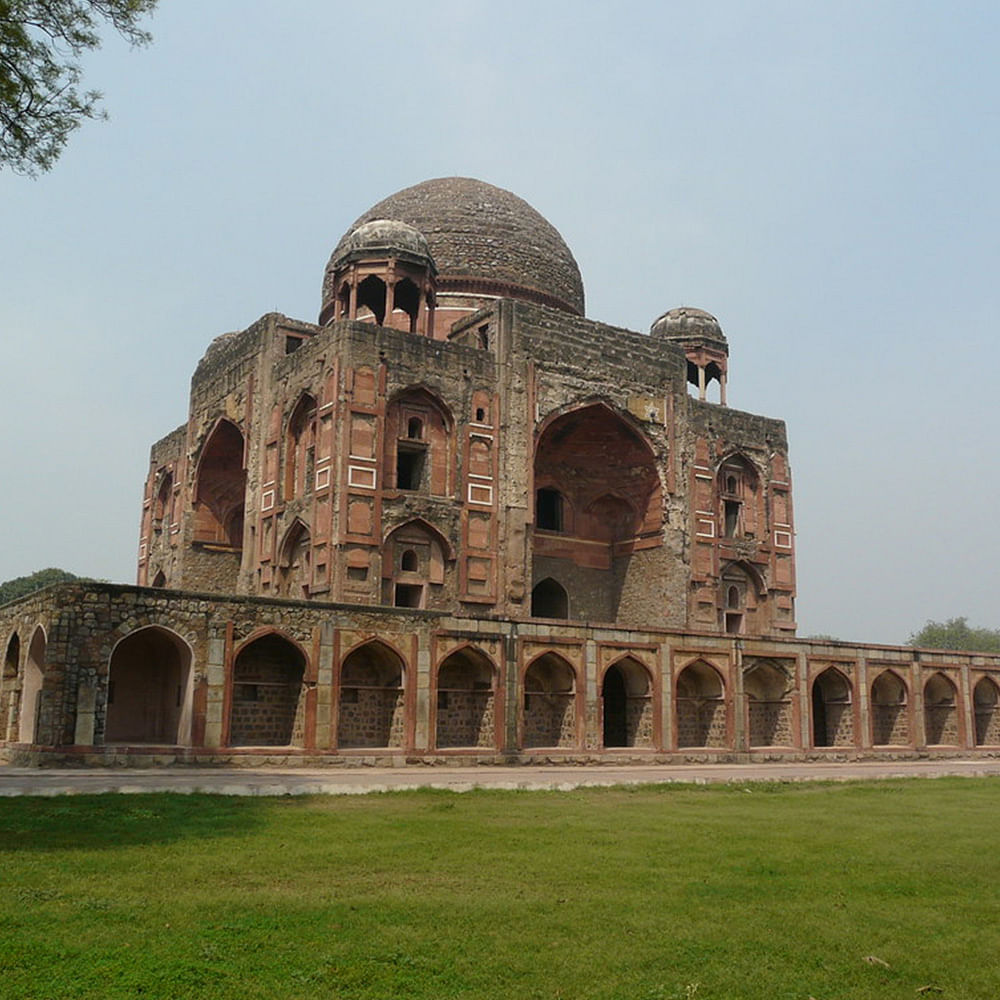When it comes to monuments, Delhi has more than its fair share; it’s home to three UNESCO World Heritage sites after all. Once you’re done appreciating the splendour of Lal Qila, Humayun’s Tomb and Qutub Minar, make a trip to some of these wonderful monuments in the city often overlooked by most tourists.
Offbeat Monuments You Need To Check Out In Delhi
Ten-Second Takeaway
Purana Qila
One of the better-known monuments on this list, Purana Qila was built by Sher Shah Suri after defeating Mughal emperor Humayun and wresting control of the city. The sprawling ruins of the fort are a part of the sixth city of Delhi, and some believe this to have been the site where Indraprastha—the city of the Pandavas from the Mahabharata—was located.
The only surviving buildings in the complex, apart from the walls and the gates, are the Qila-i-Kuhna Masjid, Sher Mandal and a stepwell. The stunning Qila-i-Kuhna was probably the royal mosque, with the tank in front for performing ablutions before prayers.
There is a wonderful sound and light show at the fort every evening, in Hindi and English, detailing the rich history of Delhi. Though less grand than the Red Fort sound and light show, it is no less fascinating.
Price of the ticket: INR 30
Mehrauli Archaeological Park
The Mehrauli Archaeological Park located right next to the Qutub Minar is often referred to by city enthusiasts as Delhi’s best-kept secret. Perhaps because of its proximity to the Qutub Minar—after all, it’s not easy being in its towering shadow—Mehrauli is still a hidden gem.
The park is one of the most historically rich sites in Delhi, and is believed to have witnessed continuous inhabitation since its foundation for an 11th century Tomar city was laid. Structures belonging to the Lodi dynasty, the Mughal empire and the British Raj can all be found here.
The 16th century Jamali Kamali tomb—arguably the best-known of the group of monuments here—is also one of the best-maintained, and the most majestic. The tomb holds the grave of the Sufi poet Sheikh Jamali Kamboh, who lived during Sikandar Lodi’s and Humayun’s reign. The stepwell Rajon ki Baoli, also from the 16th century, is a stunning monument which deserves more recognition.
PS: It is temporarily closed but will open soon.
Feroz Shah Kotla Fort
Feroz Shah Kotla is more often associated with the cricket stadium than the fifth city of Delhi, after which the stadium was named. Located off Bahadur Shah Zafar Marg (right next to the stadium), the ruins of Feroz Shah Kotla lie almost forgotten.
Of the few structures still standing in the complex, the most recognisable is the Jami Masjid. The mosque, in fact, is believed to be the haunt of djinns who need to be appeased; even today some believers offer milk and food in order to keep them happy.
The palace building facing the mosque is also in relatively good condition, with an Ashoka pillar erected on top of it, which is believed to have been moved from Ambala (in Punjab) to Firozabad. Remains of a stepwell (baoli) and jail cells can also be seen here.
PS: The entry is free.
Agrasen Ki Baoli
Just off Hailey Road near Connaught Place lies this gorgeous, hidden step-well, believed to have been built in the 14th century. It is not clear who built it, but it is thought to have been named after Agrasen, a member of the Agarwal community, even though the architecture belongs to the Lodi or the Tughlaq period.
Visitors can descend down the baoli’s steps, and even walk along its walls, though caution is advised for both. Although not the grandest structure in Delhi, it is certainly striking enough to merit a visit, offering visitors a rare moment of quiet in an otherwise busy part of the city.
PS: Entry is free.
Safdarjung Tomb
Located on the junction of Lodhi Road (about 500 metres from Lodhi Gardens) and Aurobindo Marg, this late 18th century monument is easy to whizz past on your way to the posh Lutyen’s Delhi, or to Dilli Haat, obscured as it is by trees and a police check-post. That’s also what makes it a delight to visit, since it is largely uncrowded, with only the odd couple furtively (or brazenly) romancing on its staircases or gardens.
The mausoleum sits in the middle of four beautifully manicured lawns, each of which is sectioned by a tank. Those who’re familiar with Humayun’s Tomb will be quick to notice the similarity in the architectural styles, and it is said to be one of the last tombs to have been built in this manner.
The complex also houses a mosque and pavilions, where the Archaeological Survey of India now has an office and a library.
Price of the ticket: INR 25
Khan-I-Khana Tomb
Located in Nizamuddin East, this tomb was built by Abdul Rahim to pay tribute to his wife. Very well-known for his dohas, he was then later buried in the same tomb on his demise. Surrounded by lush greenery, you'll notice beautiful abstract designs on the ceiling, although the facade of the domb has been partially dismantled but that does not take away the beauty that already lies there.
Also, the tomb isn't quite big so shouldn't take much time to visit but trust us, all of the time would be worth it.
Price of the ticket: INR 25

